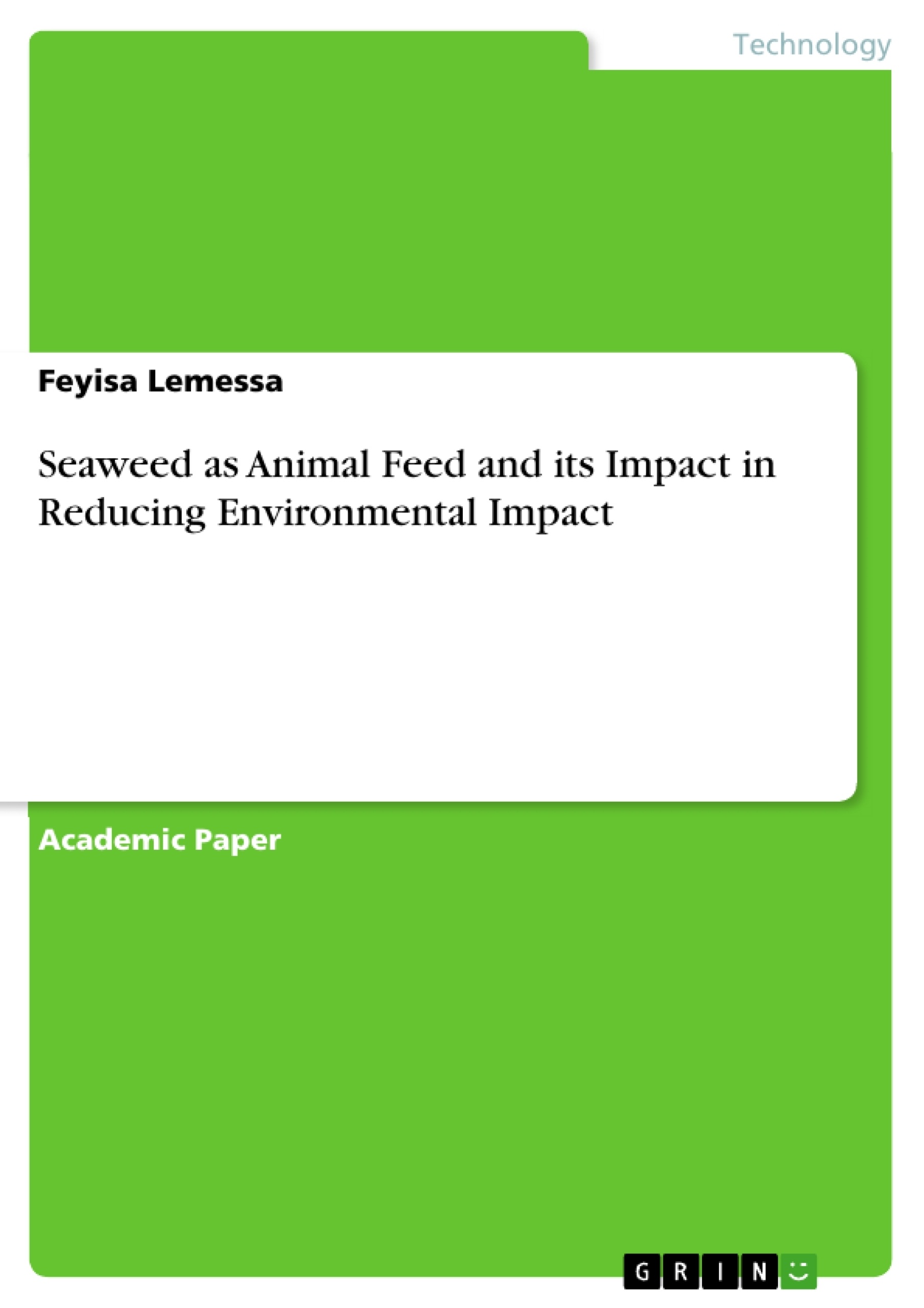The current review is initiated with the general objectives of to assess seaweed as animal feed and effect on reducing greenhouse gas emission and health. Multiple issues confront ruminant-based food production today, including environmental emissions, climate change, and escalating food–feed–fuel rivalry for arable land. As a result, more sustainable feed production, as well as the exploration of innovative resources, is required. In addition to the several food industry side streams presently in use (milling, sugar, starch, alcohol, or plant oil), new ones such as vegetable and fruit leftovers are being investigated, however conservation is difficult and output is typically seasonal. As an example of oilseed by-products, lipid-rich camelina (Camelina sativa) expeller has the potential to enhance ruminant milk and meat fat with bioactive trans-11 18:1 and cis-9, trans-11 18:2 fatty acids and decrease methane emissions in temperate zones. Despite the reduced methionine concentration of alternative grain legume proteins compared to soya bean meal (Glycine max), ruminants fed faba beans (Vicia faba), peas (Pisum sativum), and lupins (Lupinus sp.) had comparable lactation performance and development. Although wood is the most plentiful carbohydrate on the planet, temperate zones lack agroforestry techniques to ruminant nutrition. Because of cellulose and lignin connections, ruminants have a hard time digesting untreated wood, although various processing procedures can increase utilization. Fodder trees and shrubs (e.g., cassava (Manihot esculenta), Leucaena sp., Flemingia sp.) provide good protein supplements for ruminants in the tropics. The leaves and by-products of on-farm food production are combined with grass cultivation for ruminant feeding in a food–feed production system. It has the potential to increase animal performance on smallholder farms in a long-term way. Detoxified jatropha (Jatropha sp.) meal is a notable alternative protein source for larger-scale animal production.
Inhaltsverzeichnis (Table of Contents)
- ABREVIATIONS AND ACRONYMS
- ACKNOWLEDGMENT
- List of Tables
- Abstracts.....
- 1. Introduction
- 2. HISTORICAL PERSPECTIVE OF SEAWEED.
- 2.1. Chemical Composition and Bioactive Compounds of Seaweed
- 2.2. Types of Seaweeds: their taxonomic group...
- 2.2.1. Green Seaweeds..
- 2.2.2. Red Seaweeds......
- 2.2.3. Brown Seaweeds..
- 2.3. Seaweed as Livestock Feed
- 2.3.1. Ruminant micro-biome adaptation to seaweed...
- 2.3.2. Seaweed as ruminant feed
- 2.3.3. Seaweed as Monogastric feeds.
- 2.3.3.1. Fish Farming......
- 2.3.3.2. Poultry Feeds.
- 2.3.3.2.1. Broiler Poultry ...
- 2.3.3.2.2. Laying Poultry.
- 2.3.3.2.3. Oyster Feed......
- 3. The Effect of Seaweed on methanogensis: Greenhouse gas Emission.......
- 3.1. Ruminal Fermentation: indirect intervention.........
- 3.2. Direct intervention of Seaweed on Methanogens.
- 3.2.1. Methane Suppression.........
- 3.2.2. Halogenated Compounds........
- 4. Challenges and Issues of Constraints.
- 4.1. Seaweed has a limited or unpredictable demand. .
- 4.2. Limited number of suitable farm sites nearshore.......
- 4.3. A labor shortage exists.
- 4.4. Constraints over integrated farming systems......
- 4.5. Seedling quality is poor or declining. ......
- 4.6. Impacts or threats to the environment or ecology.......
- 4.7. Blooms of algae.....
- 5. Conclusions and The way forward
- 5.1. Governance as foundational Issue.
- 5.2. As a driving force, market demand..
- 5.3. As a game-changer, innovation
- 5.4. As an enabling environment, public support is important..
- 5.5. FAO's roles
- 6. References
Zielsetzung und Themenschwerpunkte (Objectives and Key Themes)
This review paper analyzes the potential of seaweed as a sustainable animal feed source, exploring its impact on reducing greenhouse gas emissions from livestock production. The review investigates the chemical composition of various seaweed species, examines its suitability as feed for both ruminants and monogastric animals, and evaluates the environmental and economic benefits associated with its use.- The chemical composition and bioactive compounds of seaweed.
- The suitability of seaweed as feed for ruminants and monogastric animals.
- The impact of seaweed on methane emissions from livestock.
- Challenges and constraints associated with seaweed cultivation and utilization.
- The role of governance, market demand, innovation, and public support in promoting the use of seaweed as animal feed.
Zusammenfassung der Kapitel (Chapter Summaries)
- The Introduction provides an overview of the topic, highlighting the importance of sustainable animal feed sources and the potential of seaweed to address this challenge.
- The chapter on the historical perspective of seaweed explores its chemical composition, bioactive compounds, and different types of seaweed species, setting the stage for understanding its potential as animal feed.
- The chapter on seaweed as livestock feed delves into the adaptation of ruminant micro-biomes to seaweed and explores its suitability as feed for various livestock species, including ruminants, poultry, fish, and oysters.
- The chapter on the effect of seaweed on methanogenesis examines the mechanisms by which seaweed can reduce greenhouse gas emissions from livestock production, focusing on both indirect and direct interventions.
- The chapter on challenges and issues of constraints explores the various factors limiting the widespread adoption of seaweed as animal feed, including market demand, farm site limitations, labor shortages, and environmental impacts.
Schlüsselwörter (Keywords)
The key areas of focus in this review are seaweed, animal feed, greenhouse gas emissions, methane reduction, ruminant nutrition, monogastric nutrition, sustainable agriculture, environmental sustainability, integrated multi-trophic aquaculture (IMTA), and livestock production.- Quote paper
- Feyisa Lemessa (Author), 2021, Seaweed as Animal Feed and its Impact in Reducing Environmental Impact, Munich, GRIN Verlag, https://www.hausarbeiten.de/document/1309481


